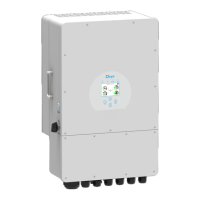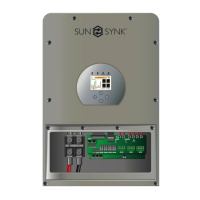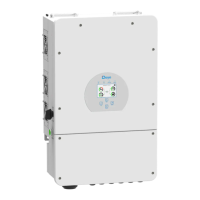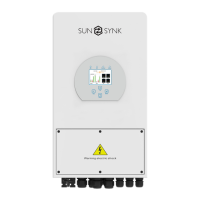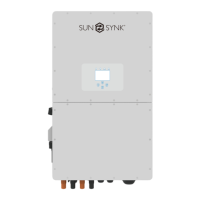Page | 17
4.4. Battery Connection
For safe operation and compliance, an individual DC overcurrent protector or
disconnection device is required for the connection of the battery and the inverter.
Users are recommended to utilise a suitable fuse and DC isolator (see next page). In
some applications, switching devices may not be required, but overcurrent protectors
must be used. Please refer to the typical amperage in the table below for the required
fuse or circuit breaker size.
Model Wire Size Area (mm
) Torque Value (max)
8kW 1 AWG 40 24.5 N.m
10kW 1/0 AWG 60 24.5 N.m
12kW 1/0 AWG 60 24.5 N.m
Please follow these instructions for battery connection:
1) Please choose a suitable battery cable (appropriate rating) with the correct
connector to attach to the battery terminals.
2) Use a suitable screwdriver that matches the bolt size to unscrew the bolts to fit
the battery connectors. Then tighten the bolts with the connectors in place with
a torque of 24.5N.m in a clockwise direction.
3) Make sure polarity is correct at both the battery and inverter terminals.
All wiring/connecting must be performed by qualified personnel.
Before making the final DC connection or closing the DC Breaker/disconnection
device, ensure the inverter unit is wired correctly. A reverse-polarity connection on
the battery will damage the inverter.
CAUTION

